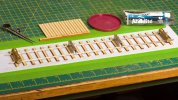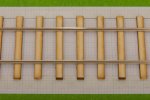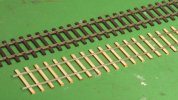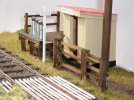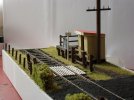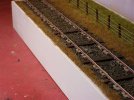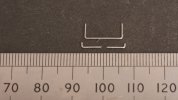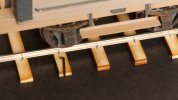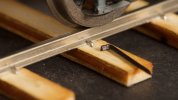3. Superstructure
I have lopped 4mm from the bottoms of the outer tank sides and the bunker sides, and a whopping 20 mm from the inner tank sides. So I have my first sight of the proportions of 'River Pant'.
View attachment 206612
Trimming away the inner tank sides makes a better space for batteries (but see later), and hopefully the model will remain sufficiently robust. I have reinforced the tops of the cab sides with strips of brass.
View attachment 206611
A loose assembly on the running plate. It is difficult to visualise what a 4mm reduction in height will look like, but really it had to be 4mm to match up with the reduction in the height of the smokebox I forgot to mention at the time. I think there is a suitable 'light railway' look in here.
The sharp-eyed may see that all is not quite right. After the boiler and tanks are fixed,
the flange on the back of the smokebox will be too deep to let me slide the smokebox forwards and release it from the model. Also, if the smokebox is to slide forwards at all, it needs a threaded fixing inside it to accept a machine screw passing up through a frame spacer underneath.
Worse, I am struggling in my mind with the real need for radio control in this loco. My life might be easier (and simpler) if I adopt analogue for all of the locomotives of the Heybridge and Langford Light Railway, and keep radio control for visitors from the foundry and the GER. After all, the layout is unlikely to have room for more than one loco in view at a time. This thinking is reinforced by 'Blackwater' being a RTR model which will be really difficult to convert to r/c unless I give it a permanently-coupled tender truck.
I might end up soldering everything here solid, with the mounting flange for the charging socket quietly entombed inside the smokebox. The concept is right, but the application would be better on a different loco.

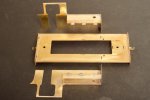
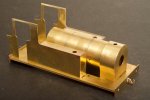
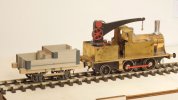
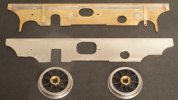
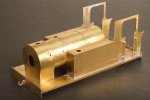
 I've been there many times and that's when I get the G-scale stuff out and just have a bit of a play! Or I buy one of the excellent rtr O scale locos that we are now blessed with, safe in the knowledge that it should still run smoothly despite my efforts to modify it a bit!
I've been there many times and that's when I get the G-scale stuff out and just have a bit of a play! Or I buy one of the excellent rtr O scale locos that we are now blessed with, safe in the knowledge that it should still run smoothly despite my efforts to modify it a bit! 


